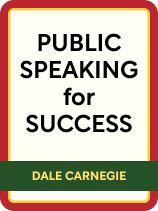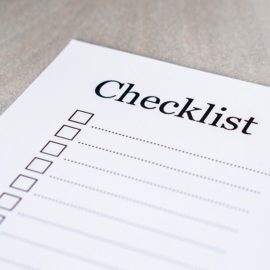

This article is an excerpt from the Shortform book guide to "Public Speaking for Success" by Dale Carnegie. Shortform has the world's best summaries and analyses of books you should be reading.
Like this article? Sign up for a free trial here.
What common mistakes do people make when beginning a presentation? What must you do well before your speech to help it get off to a strong start?
How you begin your speech sets the tone for the entire presentation. In Public Speaking for Success, author and lecturer Dale Carnegie shares practical strategies you can use to grab your audience’s attention and make them want to hear more.
Keep reading to learn how to begin a speech in a way that people won’t soon forget.
How to Begin a Speech
It’s now time to give your speech. So, how do you engage and captivate your audience right from the start? According to Carnegie, the secret to how to begin a speech is simple: Deeply feel what you have to say, and then speak from your heart rather than your head.
Having prepared ahead of time, you’ve learned your topic thoroughly and gotten all the facts straight. However, facts don’t convince—emotion does. So when it’s time to deliver, do so with passion, emotion, and great enthusiasm. If you haven’t built a strong emotional investment in your speech, your audience will notice and quickly lose interest—people can tell when you don’t really care about what you’re saying.
(Shortform note: Since Carnegie’s time, science has added weight to his claim that emotion is crucial to persuasion. Numerous studies confirm the reality of emotional contagion or the fact that we often instinctually mirror the emotions of those we interact with. This can involve aligning ourselves with the body language, facial expressions, posture, and even neurophysiological qualities of a speaker. While it’s not clear exactly how this phenomenon applies between a speaker and a large audience, the underpinnings of Carnegie’s point are founded in scientific reality.)
In more practical terms, Carnegie recommends the following tactics for successfully opening your speech:
- Pump yourself up. Right before your speech, get energized. Jump around, shake your fists in the air—feel your convictions and allow them to animate you and fire you up.
- Stand tall and act confident. Take the stage with poise and presence, and remind yourself that you are well-prepared, invested in your ideas, and here to educate an audience that came to listen to you.
- Cater to the audience. If they’re technical, you can open with familiar in-group words and ideas, like a Richard Feynman joke for a group of physicists.
(Shortform note: Having built this energy from pumping yourself up, note then that according to Chris Anderson in TED Talks, you have only 60 seconds to earn and hold your audience’s interest. He suggests a different approach from Carnegie: Open with dramatic or fascinating imagery, a curiosity-arousing question, or a counterintuitive statement (“Believe it or not, farmed fish is hardly more sustainable than wild-caught”). Mix and match these with Carnegie’s techniques, and you’ll have a foolproof way to open your speech.)
Hook the Audience’s Attention
Beyond the above general advice, Carnegie explains that you must hook an audience’s attention. People are generally impatient, so you have to grab their attention very quickly—and this is best achieved with an opening that you design in advance to maximize your chance of success. Carnegie gives the following techniques:
- Keep it succinct. Refine your opening to a sharp, powerful sentence or two at max. Then charge ahead into your speech.
- Arouse curiosity. People are naturally curious—take advantage of their desire to know more with a shocking statement, novel information, or a captivating question.
- Appeal to self-interest. If your audience is practical or business-oriented, tell them how what you have to say will improve their lives or bottom lines.
- Find common ground. When your topic is contentious, open by tactfully speaking to shared experiences, values, or points of reference between you and the audience. This gives them a positive first impression and ensures they’ll listen to what you have to say.
Beyond what to do, Carnegie says, you can also improve your opening by avoiding the following common (and often ruinous) errors:
- Opening with an apology. Often used to seem humble, this technique makes speakers look incompetent or unprepared and can annoy audiences.
- Opening with humor. Most speakers can’t pull off jokes, so you’ll most likely make the audience cringe and pull away emotionally.
- Opening too formally. Scripted, overly rehearsed, and/or dry openings easily lose the audience’s attention.

———End of Preview———
Like what you just read? Read the rest of the world's best book summary and analysis of Dale Carnegie's "Public Speaking for Success" at Shortform.
Here's what you'll find in our full Public Speaking for Success summary:
- Why public speaking is one of the most important skills to have
- How to overcome the fear of public speaking and adopt poise
- How to research, write, and deliver a memorable speech






